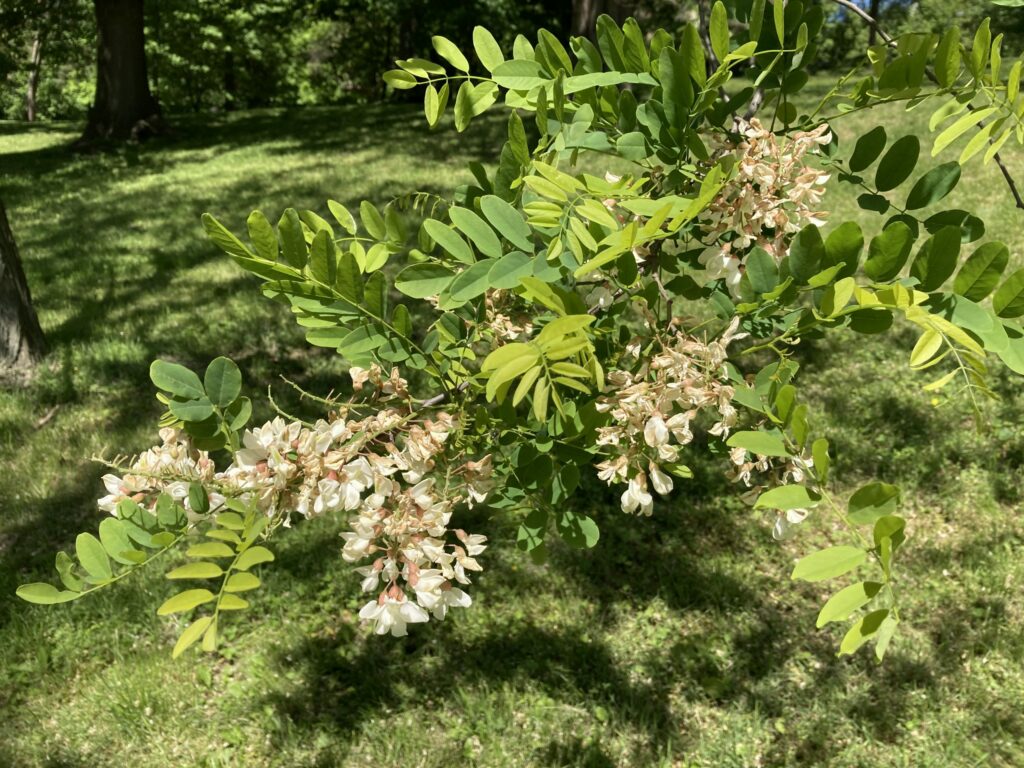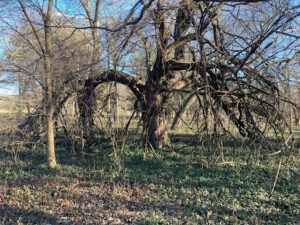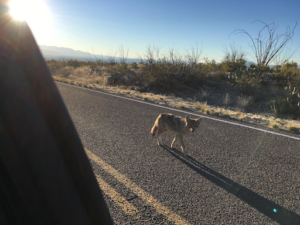By: Mark Halpin, Forestry Manager
Robinia pseudoacacia, black locust, does not get a lot of respect among the arborists, foresters and horticulturists of North America, although it is common both in the wild and planted landscape. Perhaps familiarity breeds contempt. It’s also weedy, and its wood is brittle and spiney, and those features certainly aren’t endearing. It is a tough tree, and a favorite of landscape architects who often place it in that most unforgiving of sites, the retail parking lot. It has the virtue of being one of the only native trees that will survive in such “tree coffin” sites, but it seldom looks very good there. And even if it does look halfway decent…when was the last time someone said “I saw the most breathtaking tree at Long John Silver’s the other day!”?
Even in nice park conditions it is seldom a beautiful tree owing to its scraggly habit and tendency to lose limbs, and so it tends to be ignored or cursed. It is only when the long, pendulous racemes of intensely fragrant white flowers bloom (as they currently are in St. Louis) that the tree jumps to the forefront of the landscape. These flowers are prized for honey production, and locust has been widely planted in the past for this purpose. It has also been prized for its wood – although brittle, it is extremely hard and resistant to rot, and burns slow and hot. Unfortunately, black locust is a pest magnet and so trees seldom attain marketable sizes (it can exceed 100 feet, but 50 is the more common top end of its size in our area) and it is generally ignored by the lumber industry.
Like other “pioneer species” such as silver maple, boxelder maple and cottonwood – weedy and fast growing trees that colonize disturbed areas – black locust has the dubious distinction of being considered an invasive species in places where it is native. But pioneer species serve a valuable ecological function, black locust for example being a “nitrogen fixer” that can render soil fertile by collecting nitrogen from the atmosphere and making it available for other plants. They should be planted sparingly as they live fast, die young and leave their unattractive corpses in pieces all over the landscape, but we shouldn’t curse them simply because they do a dirty and thankless job. They, too, have their place in the world. Black locust can in fact make a decent street tree for tough locations – it may be short-lived but it grows quickly and so provides good benefits while it lasts.
Black locust is related to honey locust (Gleditsia triacanthos), both belonging to the Fabaceae (legume or pea) family – both are weedy pioneer species, valuable for honey, with dense and hard timber. Both are liable to puncture your skin, but let’s take this opportunity to put on our botanical smarty pants: black locust pokes you with spines, whereas honey locust does so with thorns (roses do so with prickles, although “every rose has its thorn” has a more poetic ring than “prickle”). Spines are modified leaf tissue and emerge from the base of a plant’s growth nodes, and thorns are modified stem tissue, emerging directly from the node. Prickles are internodal tissue and can occur all along the stem or leaf. Thorns are definitely the most menacing of the bunch – honey locust thorns were in fact used as nails in softer woods in the past.




